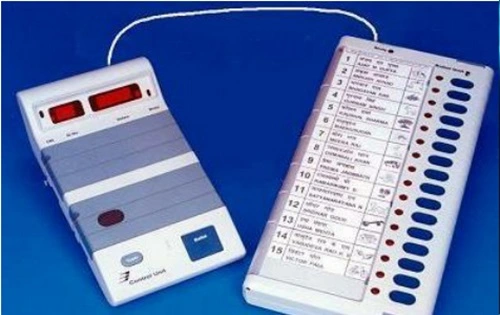Do you know what an EVM really is? This handy device or machine, which stands for “Electronic Voting Machine,” has completely altered the process of conducting elections and that’s precisely what makes it a point of discussion in literally every election. Just so you know, right now there are around 25 countries that use EVM for conducting elections. Sure, we are using technology in every aspect of life, then why not use it in voting, right? Well, many people are in favor of doing so, but there are still more than a hundred countries that prefer to go with traditional voting methods like paper ballots and hand tallying. But with EVMs, voters can just choose who they want to vote for with just a push of a button. That’s it! And yes, when it comes to the vote counting, well, that thing is also super fast and pretty accurate with EVMs. At least that’s what the manufacturers and experts claim.
But still, in big democracies like India, there is always a debate about whether to keep on using these EVMs or not. If you don’t know why that is even a point of discussion, then keep on reading the following pros and cons of EVMs, and you’ll precisely know why’s that. So, let’s get to it then, shall we?

Advantages of EVMs
1. Speedy Vote Counting
The fastest vote tally of Electronic Voting Machines is among their nicest features. EVMs produce results practically quickly, unlike the traditional paper ballots that would take years to count, you know? For those who are counting the votes, this quick approach saves a lot of effort and ensures speedier knowledge of the election results. And sure, it also reduces error count, which is usually a benefit.
2. Saving Trees? And Costs Too?
Because they eliminate the need for paper ballots, EVMs are excellent for the environment, we can say that for sure. Not cutting down trees for election day! Along with saving money on printing and distributing those paper ballots, this reduces waste following the election. Thus, the earth gains as well as the budget, you know?
3. Easy on the Wallet
Although at first glance setting up EVMs seems expensive, over time they save a lot of money, that’s for sure. We are discussing large paper, printing, and transportation reductions. Since EVMs are far simpler to handle than tons of paper ballots, logistics is simpler and less expensive as well. This makes them a wise decision, particularly in large-scale elections involving hundreds of millions of votes.
4. Fewer Counting Errors
See, there is this thing called human error, and it can very well happen when we are counting something. And when it comes to counting votes, well, the stakes are a little high because every vote matters. Conversely, though, EVMs are greatly more precise since they automate the complete process. Fewer mistakes and a more dependable result follow from this automation.
5. Accessibility for All
Unlike ballot papers, EVMs are pretty inclusive of people with disabilities. Just because they are disabled doesn’t mean they can’t vote, right? Well, that’s where EVMs are kinda a great solution with features like Braille, audio assistance, and tactile buttons. This guarantees that everyone can participate in the elections, therefore ensuring a fair and representative process regardless of physical capability.
6. Super Secure
Modern EVMs have a lot of security mechanisms meant to stop manipulation, you know? These machines are made to maintain a fair and clean voting process from tamper-proof seals to safe software. All in all, EVMs have been quite helpful in nations like India in reducing dubious practices like fictitious voting and so increasing the credibility of the elections overall.
7. Transparent and Checkable
Voter Verifiable Paper Audit Trail (VVPAT) is a capability of many EVMs these days. This adds still another degree of openness by letting voters view a paper slip of their vote prior to electronic recording. It’s like a receipt proving your vote was cast accurately.
Disadvantages of EVMs
1. Hacking Worries
EVMs lack total hack-proofness even with all the security measures. One always worries about someone trying to tamper with the equipment. Although such events are rare, people’s mistrust of computerized voting systems may originate from their fear of hacking, which is pretty real.
2. No Physical Backup
Particularly older EVMs, some lack a paper trace. Without anything like a VVPAT, one cannot physically confirm the votes, which could cause issues should a conflict arise. All in all, the lack of a physical record can lead individuals to doubt the validity and impartiality of the election results, and we have seen that countless times by now, right?
3. Tech Glitches Are Real
EVMs occasionally fail, the same as any electronic gadget does. These things like a hardware problem, a software flaw, or a power outage, can cause delays and issues. This implies that a good strategy must be in place to address any technical issues that might surface on election day.
4. Tech Know How Barrier
For some, EVMs simplify voting, for others, particularly the elderly or those not technologically literate, they might be challenging, and that’s how it is. For certain people, this digital barrier can make voting a bit more difficult.
5. Power Dependency
Since EVMs require electricity to operate, places with inconsistent power can find issues. And sure, when votes are being conducted in rural areas of a country, there has to be a constant power supply, or else, the EVMs won’t work. But usually, governments spend a lot of money to ensure that there is a constant power supply for the EVMs on voting days, so that shouldn’t be too big of a problem.
6. Trust Issues
Sometimes using EVMs makes people suspicious, particularly in areas where openness and responsibility are major issues. Sure, for some people it is not as transparent as you think because, with devices, there is always a possibility of hacking and tempering.
Comparison Table for Advantages and Disadvantages of EVM Machine
| Advantages | Disadvantages |
| Fast vote tallying | Potential hacking concerns |
| Eco-friendly and cost-effective | Lack of physical vote record |
| Long-term cost savings | Susceptible to technical malfunctions |
| High accuracy in vote counting | Challenges for non-tech-savvy voters |
| Accessible features for all voters | Dependency on stable electricity |
| Enhanced security features | Public skepticism and trust issues |
| Transparent with audit capabilities |

